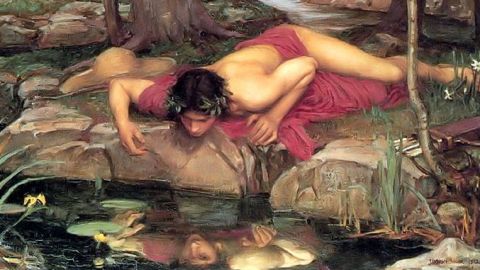Online Dating Sites Creating “Beauty Inflation”

Try this as an exercise. Give yourself an honest score on a scale of one to ten that represents where you believe you sit in the distribution of physical appearance for your gender. So, for example, if you feel you are better looking than 70% of all men/women but not as good looking as the top 30% then you perceive yourself to be a 7. Now go onto an online dating site and do a search for people the same gender and age as yourself and take a look at the pictures of people who advertising themselves on that market. My guess is that if you look at 30 or more pictures and try to place yourself in that distribution in terms of physical appearance you will find that you had initially placed yourself much higher than you would have on this particular market.
The reason for this is not necessarily that you initially overstated yourself in terms of looks (okay, you have but that isn’t the point), nor is the reason that only the really good looking people are operating on online dating sites. The reason is this: Everyone can find at least one good picture of themselves. And if everyone puts their very best picture on their online dating profile (and why wouldn’t they?), then anyone trying to estimate the distribution of attractiveness using dating profile pictures will almost certainly overestimate the average level of attractiveness for people of that gender who are searching on that market.
The phenomenon that I am talking about here is what social psychologists call “contrast effects”. These effects suggest that when presented with an image that is ranked much higher than an image that is presented next, individuals will rank the second image lower than they would have otherwise because of the contrast between the two images. Field studies have shown that men who have been exposed to images of very attractive women will rank average women as less attractive than they would have had they been exposed to a different set of images.
If marriage is what happens when a market clears, then it makes sense that upon entering that market individuals try to develop an accurate sense of where they sit in the distribution of marketable attributes. That is how they set their “price” on the market. Given that we are depreciating assets, i.e. our value on the market falls as we age, the more accurately we can determine where we sit on the market early on, the better off we will be in the long run. This is essential if we hope to exit the market before our value starts to decline.
So over-estimating our place in the market may result in our having to exit the market later (after a period of honest self-reflection) likely making us worse off than we would have had we priced ourselves accurately in the first place.
Most of us are pretty bad at placing ourselves within the distribution of physical beauty, we have talked about this before, but putting that problem aside there is an additional confounding factor: What if we overstate the average attractiveness of men/women in the pool in which we are fishing? If we do that then, even if we accurately place ourselves in the distribution of people with whom we are competing, we will almost certainly over-shoot in our expectations for our potential significant other.
It seems to me that while online dating sites in theory will shorten the search for a mate, the fact that everyone uses their best picture is creating beauty inflation that is driving up an individual’s perceptions of their own price on the market. If prices are artificially high, and slow to adjust as a result of this inflation, then the market will take a long time to clear.
There is a second possible effect: relationship dissatisfaction. If a man/woman who is currently in a relationship decides to take a look at an online dating site just to see what else is available on the market, this behavior will almost certainly lead to dissatisfaction with their current partner because it will encourage the searcher to lower their estimation of their current partner’s physical attractiveness; not because they are less attractive than previously perceived but because perfect profile pictures are shifting up the whole distribution.
For a really great paper that discusses contrast effects I recommend “The Future of an Applied Evolutionary Psychology for Human Partnerships” by Craig Roberts, Emily Miner and Todd Shackelford (Review of General Psychology vol. 14 No. 4 2010: 318-329)





